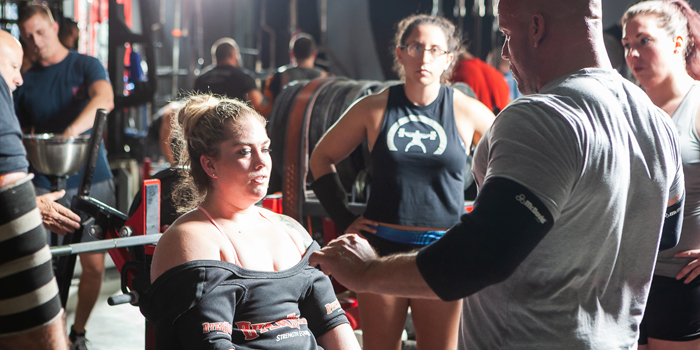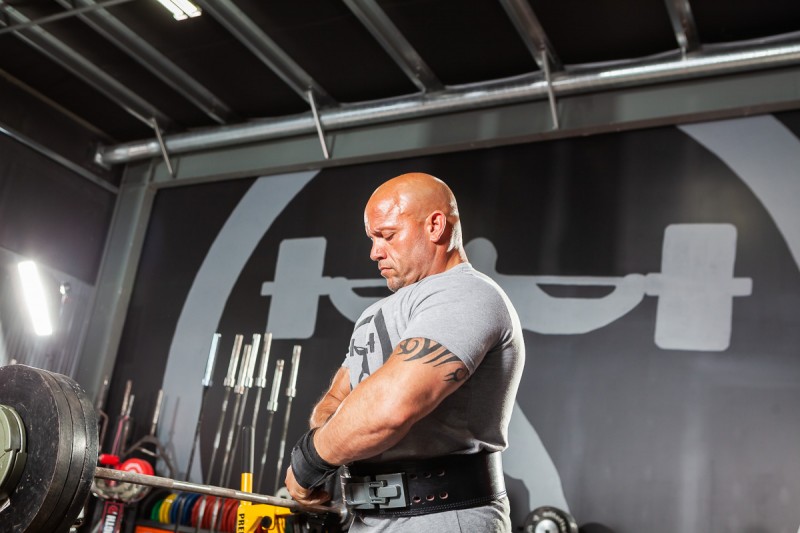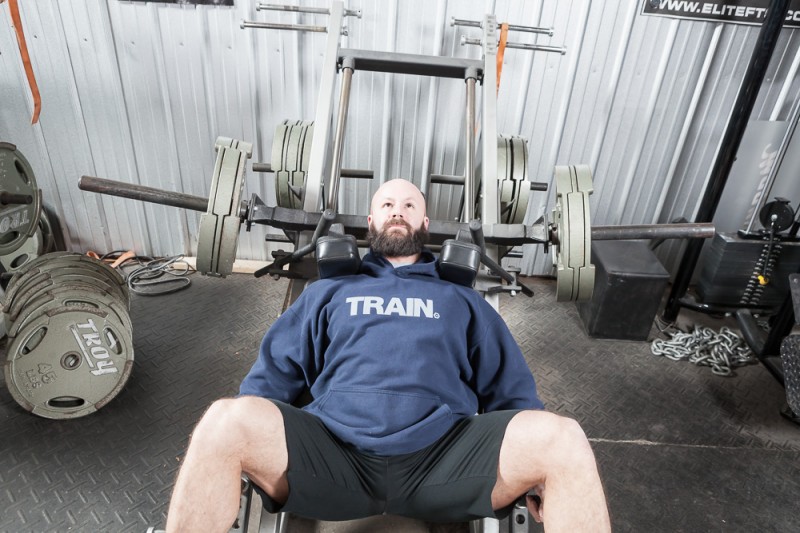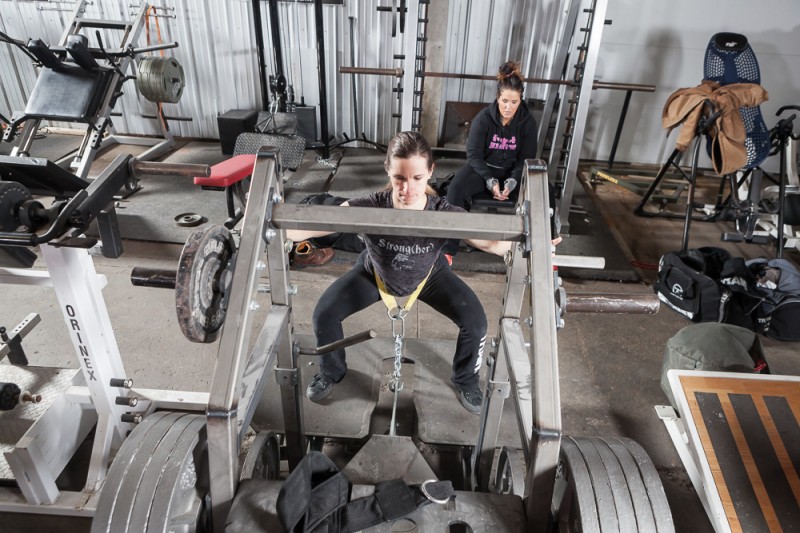
Wait for it.
You have heard the axioms all before.
Good things come to those who wait. Patience is a virtue. A watched pot never boils. Haste makes waste. How about the story of the Tortoise and the Hare? There seems to be a lot of admonitions against hurrying from the storehouse of old wisdom. You can find an old saw for whatever you feel like doing or justifying.
So, how does that work out for us in our modern world? We can't seem to get things soon enough! We are living at a time that has no equal in terms of instant gratification. Never in the history of humankind have we had access to so much in so little time with so small of an investment. The rectangle in your pocket is more than enough proof to make my point. You can ask it any question you wish and it will instantly give you the answer. That has never happened to us humans before. Our ancient wisdom seems to be at odds with the pace of the world we inhabit today.
RECENT: How to Write Your Own Program
This has been understood to be “how the world works” now for several generations. These young people (perhaps you are one) have been born into a world that has always been like this for them. They are unable to remember a time without such incredible power and information at their fingertips. They have had it since they got here. They learned how the world was put together and how it works day to day with the undercurrent and sustaining pulse of computers and the internet. It baffles them to think of how it could have been otherwise. They bristle at the thought of what their lives would have been like without all of this instant power in the palms of their hands. It has been “how things work” from the time they learned every single thing they know about the world. It’s simply how it operates for them. It is NORMAL. Things move fast for them. As such, they have no reference for PATIENCE.

I want to discuss the merits of patience. If you are a “millennial” or, like me, a person from another generation who has become beguiled by the power and comfort of the internet and the society that it has engendered, I want to revisit the value of “the long haul.” Why wait for things? Why postpone gratification? What good is patience in a world that moves at the pace that our modern one does? I will make the argument that patience does indeed have a place in the world today. That it can play an important role in your training in the gym as well. But pivotally, it can bolster your attitude in a very positive way. I’m going to make the case that building our patience can be especially useful now that the world disdains it. It is, with no pretense or irony, a lost art.
It is clear that the need for patience has diminished. This is very true in many, if not most, of the facets of modern life. Some things speed along, and that is just dandy. Ah, but it categorically does not apply to physical training and muscle building. There is precious little impact that the computer has had in the weight room. The speed of improvement in the strength and development of muscle has not seen a commensurate increase compared with the rest of daily life. Most things in life come to us faster, easier, and more readily. But that is not so in training. The fact is that weight training and conditioning have been relatively untouched by the advent of computing. You can make a good argument for the idea that information about training is increasing because of the internet. But that is debatable. You might also make an argument that good information is harder to find because of the tsunami of misinformation that the net provides.
But I’m speaking of the actual process of muscle growth and strength accruing. That still takes place at the same glacial pace as it did prior to the cyber age. NOTHING about that happens any quicker than it ever did. To quote David Byrne…“Same as it ever was, same as it ever was.”
I’m sure you are a step ahead of me here. The point is that with every expectation in every other dimension of life being so accelerated by technology, there can arise a non-trivial amount of PURE FRUSTRATION when it comes to strength training. How could it not? We get everything faster in life, but NOT MUSCLE!
Yes, but that is axiomatic, you say. OK. Point taken. I know I’m no genius for pointing this out to you. But stop a second and ask yourself if it had really already occurred to you? Sure, now that I’ve said it, it becomes obvious and quintessential. World = Fast, Gym=Slow. But if I had left it unsaid, might it still be a nagging frustration without a name? Perhaps. Perhaps not. Often some of the most invisible things to us are literally right in front of our eyes. But I hope we can agree that the cat is out of the bag now. The disconnect between life as a whole and training is vast. So let’s deal with it.
Before we attack some things about overall patience (and impatience), I want to bring up a more specific kind of patience that relates to training directly. Aside from the general impatience that we can be subject to when addressing the entire progress of our training, let’s look closely at the kind of task-specific patience needed to perform the actual sets and reps of the program. What I’m referring to is the attitude that can corrupt the performance of exercise execution in the gym. We have all been seduced by it from time to time. Thoughts like “just get it over with” and “crossing off sets” or “checking the boxes,” or perhaps focusing on the results only or thinking ahead to the “next” thing.

Have you ever asked people who are working out “How’s it going?'' and heard the reply “Better now,” implying that they are feeling relieved in some way now that they have finished their workouts? As if a workout was some burden to bear only to “get them somewhere”?
Yes, I’m keenly aware of the “work” part of “workout,” but if you really don't want to be here...don't bother coming in! I was watching a documentary about the U.S. Navy Marine Sniper School program. It takes only a few in for the shooting training per class. Even fewer than SEALs. Just 29 guys were in the class I watched. The program does six weeks of “weeding people out,” targeting those who don't have the kind of patience, resilience, and long-haul determination to make it. The shooting training is so time consuming and precise that the program can't afford to have anyone drop out. It invests way too much money and time into them. After the initial six weeks, those leading the program actually start to root for the guys to hang tough and finish the school. They are already the best marksmen in the military when they show up. To lose one of these guys is a tragedy. Great shooters like them are not a dime a dozen. So, before they invest all of that energy into making excellent shooters the very best on the planet, they beat the living daylights out of these guys.
It’s exactly what you would expect. So, right at the end of the initial six weeks, they go on a buddy carry run. Some sniper in Vietnam carried his dead spotter out of the jungle on his back for about 15 miles or something crazy like that. No man left behind, I suppose. So, the guy is a legend in sniper mythology and lore, and this exercise is named after him. The two guys in the buddy carry have to carry each other in shifts for some unbelievable distance. It's very far, although I can't remember the actual distance and don't want to misquote it here and lose the impact of the story. It’s a distance that you would not want to walk, let alone carry some dude on your back. And it is timed.
So, there is the setup for the point I want to make. The last two guys were about halfway through the torture, and they were both puking their guts out. The rule is that one guy has to be on the other's back the whole time. If they try to catch a break while switching, they fail and get thrown out. So, the instructor was barking at them to immediately get one guy up and get moving or go home. One must have tried to explain something irrelevant to the instructor, which set him off. He walked up to them and bent down as they were retching and said in a somewhat calm voice for the circumstances...
“You don't have to be here. You don't have to do this. Nobody asked you to become a Marine sniper. You chose to be here. You can choose to go home. It's you who wants to be one of us, not the other way ‘round. If one of you does not climb up on the other one’s back right now and finish this evolution, you are dismissed and can go back to your company. You have 15 seconds to comply.”
WOW! YOU DON’T HAVE TO BE HERE! That was so true! Why in the world do we complain when it was our choice to drive to the gym in the first place? We don't have to be here. We can go watch a movie. Or have a nice steak dinner. Isn't it implicit that we should want to be where we are? I make an effort to get to the gym. I'm glad to be there. I want to be there. Why are some people complaining about it and acting as if it would be just great to be finished and out of there? Maybe they just want the muscles. They have not willed the means, only the ends. In a word, they are impatient. Just pay me; I don't want to do the work. And if I’m doing the work, I’m only doing it for the paycheck. If you are impatient about going THROUGH the workout, you will be thinking about being somewhere else, and you're not really there at all!

The guys both made it, by the way.
So, at the gym, if I hear some comment that belies impatience or a reservedness about being there, here's my reply: “You don't have to be here.”
But if we are here, let's have the patience to do what we came to do! Let’s NOT RUSH!
The relationship between patience and attention is clear. If one has more patience, one can stick with something longer than without it. It’s called attention span. One key factor that improves it is patience.
Patience is more of a feeling perhaps. Let's call it the ability to feel OK staying on one thing at a time and waiting it out, so to speak. Not feeling rushed or uneasy as time passes. Imperturbable. It is associated with calmness or tranquil states. But it does not necessarily imply stasis. It does not mean complacency. I think too many people do make this assertion. They link patience with a lack of drive to “go someplace” or “get it done.”
I reject this. Having patience to wait for things to take shape and develop in no way means there is a dearth of desire to achieve or to progress. It is not apathy or resignation. This goes too far. To my way of thinking, patience is a feeling of resoluteness that sustains one’s desire as the maturation of the endeavor takes place. We must not fail to make this distinction. Being patient is not a sign of losing the intensity to pursue one's goals. It is rather the underpinning current of ongoing and unwavering desire that must accompany any long-term project or undertaking. Do NOT mistake patience with low intensity! The greater the patience, the greater the chance to come up with the required intensity. If you go too fast, you lose control. Going steady and patiently will allow greater control and the chance (in terms of time) to do exactly what you want to do at the intensity you want to do it at.
Without this kind of grit, one can make hasty mistakes, try to cut corners, miss crucial lessons, and, of great significance to me personally, lose the immense satisfaction and reward of each and every step of the journey. Patience allows one to fathom the process of improvement and progression. There is a lot of fulfillment to be savored along the way. Patience is the gateway through which passes much of the quintessential little tidbits and gems that make doing the thing worth the work. Without patience, too much just slips away from us. How we perceive what we are doing matters.
Let’s explore one example of patience in performing a single set of bicep curls. The first idea I want to introduce is a very simple but effective way to get a long way down the road: Instead of doing ONE set of SIX reps, change the directive into SIX sets of ONE rep each. Just mentally reframe the task from a group of reps into just one at a time. You still do each rep one after the other, but you MENTALLY separate them from one another. You focus on doing ONE good rep, and then, you focus on doing ONE more good rep until the desired number has been completed. You employ the patience to perform a repetition at a high level of quality without looking ahead to the next rep or to the completion of the set. Just patiently do the rep you are on. Do not think of the next one or the preceding one. Just the one you are on. This will have the effect of improving the quality of execution just by giving your mind time to focus.

If you are under the impression that you already do every rep in your workout nearly perfectly, one at a time and one after the other, then you can make sure of it by trying this technique for an entire workout. You will be surprised at how mentally taxing it is, not to mention how many reps seem to just slip past you by habit! If you find that you are counting the reps as they go by, you are doing “the set” and not each rep. Have a spotter or partner do the counting and tell you when to stop. This is quite a challenge in itself. Attempt to pay attention to only the correct and nearly perfect execution of the technique of the repetition. When you start to “lose count,” you are on your way. One tactic I regularly use is to count ONE -TWO- ONE -TWO -ONE- TWO...off in my mind. I quickly lose the total number and am released from the stress.
By breaking apart the set into doing single reps and not getting attached to the completion of the set but rather focusing only on the completion of the rep you are doing, you will undoubtedly do your reps better and promote greater gains. It can be mentally freeing to have to think of just one rep and not become overwhelmed by the entire set. This is the combination of discipline and patience that will lead you to a greater strictness of your exercises. This kind of perseverance and restraint will lead to the command of better and better form on your exercises. If you want to master the moves, then you need to employ more patience.
Another great trick toward getting the most out of each rep is to focus on the movement between the ends of the range. Most of the time, it is almost automatic to think of the beginning of the curl when the arm is extended and in the stretch position, then skip everything in between and put our attention to where we are headed—specifically, the fully contracted position. Think through a repetition right now in your mind, and imagine it going from start to finish. What did you picture?
My first barbell set was from Sears and Roebuck. It came with an exercise manual to show the way you use the weight. It had a well-oiled bodybuilder (Bill Grant) of the day posing for pictures to “demonstrate” proper form. For the bicep curl, it showed a photo of him standing and holding a straight bar at his waist with an underhand grip in front of him for “Photo #1.” Then, the next photo (#2) showed him with the bar under his chin, with arms bent at the elbow. “Photo #3” was a duplicate of “Photo #1”. The idea was to show how to exercise by moving the weight from point A to point B. Then, return. Repeat 10 times. Relax at point A, and contract at point B.
This is certainly enough information for a total novice lifter. But sadly, this same model is applied to ALL levels of athletes. And in no way does it even begin, or try to begin, to explain the actual EXECUTION of the movement. It skips the actual flexing of the muscle! It ignores the how. HOW YOU GET FROM POINT A TO POINT B IS THE EXERCISE! The two endpoints are rests! The two endpoints are the stops, not the movement! How can they explain the movement if they aren’t MOVING?! Well, they can’t. And they don’t.
That is why intermediate and advanced lifters are woefully unschooled in the EXECUTION of their exercises. BOO! Oh, I watch them get from point A to point B alright. However, don’t blame me for the inevitable plateau when you haven’t moved past a beginner’s understanding of exercise execution. Paying attention to HOW YOU MOVE IN EVERY SECOND OF THE REP IS HOW YOU LEARN TO ADVANCE IN TECHNIQUE. Without diligence, discipline, and patience, you are doomed.
So, another way to find and apply patience is during the contraction of the muscle. A technique that helps is to disassociate from the weight, the bar, your hands, and everything but the muscle belly. To understand this, you MUST have at least a working knowledge of where the muscles attach to the bones and how they actually contract to move them. You don’t need to pass an Anatomy 101 class, but you do need to know what the muscles do and how they do it. You must know why a muscle changes shape when it contracts and what a muscle belly is. You must know the bony attachments so that you understand how the contraction of a muscle will make them move as levers around a joint.

In this way, you can patiently focus on the contraction instead of on the outcome of the contraction. If you contract the biceps correctly, you don’t have to wonder if the bar moved right or not. It did! It’s all connected. In this way, you can put all of your attention on the muscle and not worry about the machine or the dumbbell, or whatever is attached to the bone. Rubber band, spring, bag of rocks... the muscle doesn’t care. It only contracts.
It is sad to come to the realization that perhaps you have spent far too many hours in the gym without this attitude. But that was then...this is now. Spend at least some of your time getting to feel this. It pays big dividends. Its return on investment cannot be overstated. Commit some time to this. I cannot explain how fast it will affect your lifting...and perchance your life. It’s that useful.
This is only a primer on the topic. But I would be remiss if I didn’t say how tough of a time I personally had getting here. I was incredibly impatient as a young man. When I would take those quizzes in magazines where they try to help you to see yourself better, they ask you to be honest and pick one thing you wish you could change about yourself. For me, it was always my impatience. This was clearly borne out by my loved ones and friends. I hated it but thought it was just my character and that I would simply have to cope. Changing it in my life has come about from my work in the gym. If even I can, YOU can.
MORE: JM Blakley’s Top-5 Bench Press Tips
Now, to my surprise, I seem to have a reputation FOR being patient! So, if you are about to dismiss yourself from this work and say, “I’m too ADD for that nonsense!” be careful not to write yourself off too soon. It will get you out of all of the effort and work it takes to become more patient. But it won’t do you any good in the gym. Maybe you are using the ADD excuse to hide behind laziness.
The gym is all about the long haul, the big picture, and perseverance and persistence. If you can persist in one arena, you can do so here. As a teacher, I was constantly at odds with kids claiming ADD but somehow being able to focus intently on a video game for three or four straight hours! Think about your own life, and look for these types of inconsistencies. Ask why you can seem to have quite a good deal of focus (and lack of ADD) when you want to! ADD may be a thing, but if you accept it, you are its prisoner. The LEAST you can do is to work on it some every day. It improves. Just like any other thing you practice at.
It may be VERY unappealing to you...at first. I see this as a filter to weed out the weak-minded. Those lacking resolve and commitment. If you want something, it doesn’t have to be fun. But this actually does become fun and far more as well. If you believe me, this can become JOYFUL. That is a lot to say, I’m aware. But if I didn’t believe it, I wouldn’t put it down in writing for all to see with my name attached.
The ONLY way to prove me wrong, though, is to do it diligently for yourself. I was wrong once before (I think in 1988), so I might be wrong again. I’m not above it. But it is up to you now to find out. I’m betting on ME!
But it will be YOU who benefits...I’m already there. I’ll see you when you get here.











1 Comment